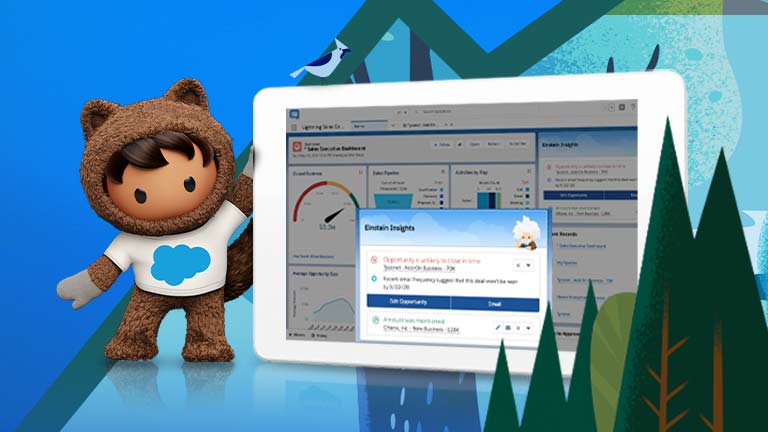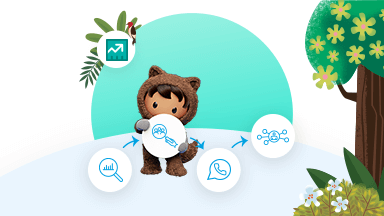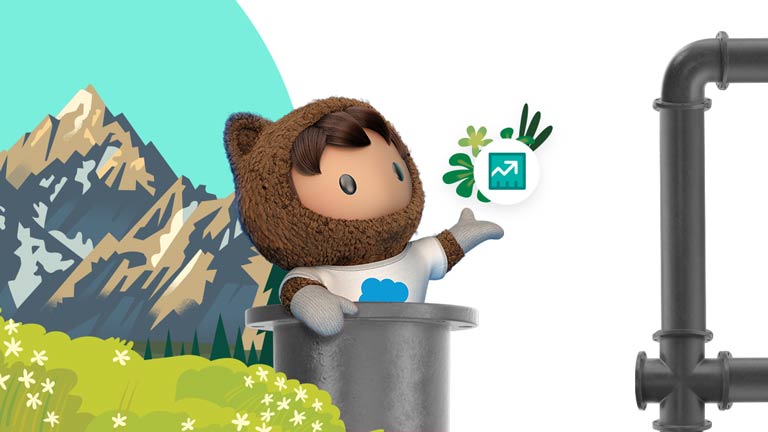What Is a Sales Pipeline and How Do You Build One? A Complete Guide
Managing your pipeline lets you catch tiny problems before they become big.
Sellers love the close. But focusing solely on the close is like a marathon runner trying to take a shortcut — you might get ahead, but you’ll be kicked out of the race. The best sellers, like the best runners, log the steps and embrace the journey to success. That’s where a healthy pipeline comes in. It gives you the structure and guidance to build strong relationships and secure consistent deal wins.
It may seem like quite a hurdle, but we’ll show you how to build a healthy sales pipeline, step by step.
What we’ll cover:

Join the largest and most successful sales community.
Drive confident decisions and grow revenue with these 9 sales KPIs

Build a sales forecast like a pro
What is a sales pipeline?
A sales pipeline is a visual representation of where all of your prospects are in the sales process. This allows you to gauge likely revenue and determine the health of your business. It provides a snapshot of the health of your business. After all, you can’t manage what you don’t measure.
Imagine a pipeline as a free-flowing river. If there are problems upstream, there will eventually be problems downstream. Pipeline management allows you to catch tiny problems before they become big problems that impact revenue. With it, you can estimate how much your reps might close in a given week, month, or quarter.
A sales pipeline is not to be confused with a sales forecast. Though they draw from similar pools of data, a sales pipeline focuses on the present moment and what reps should be doing right now to close deals while a sales forecast estimates how much revenue a company can hope to bring in if those opportunities are indeed won.
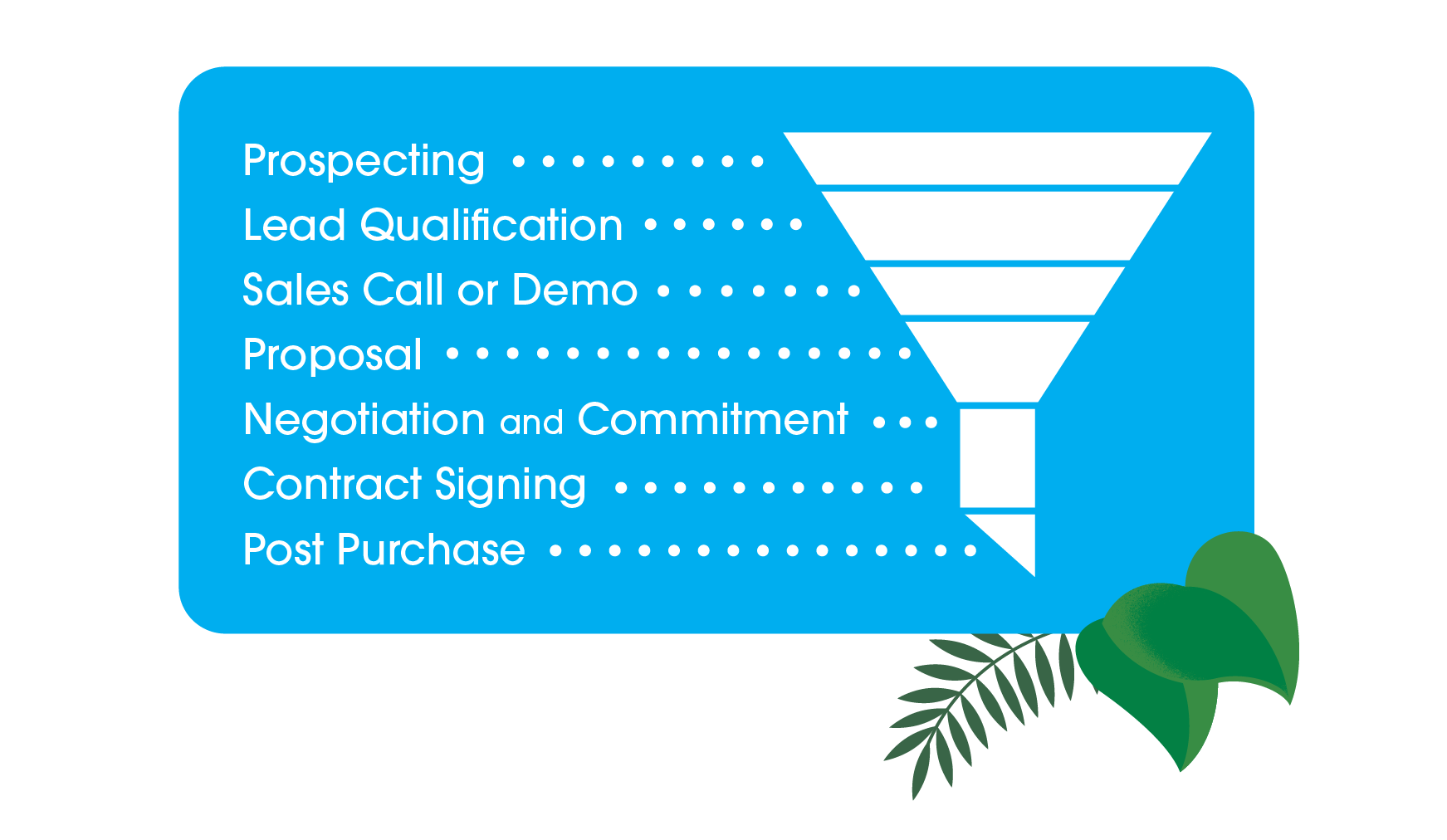
Why is a sales pipeline important?
A sales pipeline gives you a bird’s-eye view of where every deal stands in the sales process — and any obstacles that may hinder a successful sale. With this information, you can address roadblocks and increase the chances of closing the sale.
A sales pipeline also provides a clear picture of potential overall revenue, allowing you to create accurate forecasts. With these forecasts, you can see how likely you are to hit revenue targets and adjust sales strategy as needed to make sure you hit your goals.
Ultimately, a healthy sales pipeline is about keeping deals moving. Without one, prospects can get stuck in the sales process and reps may not know how to get them unstuck. This results in missed sales targets and lost revenue — not to mention a frustrated sales team.
How do sales pipelines work?
A sales pipeline follows the journey prospects take from first contact to purchase. Once a lead has been deemed qualified (a good fit for the product), they enter the pipeline as a prospect and reps track progress as sales conversations unfold. When the prospect meets specific exit criteria (requirements needed to complete a pipeline stage), they move to the next stage in the pipeline. This progression is typically tracked using a customer relationship management (CRM) platform and displayed in a dashboard that provides a visual representation of the pipeline's health and performance.
You can compare this journey to a free-flowing river. If there are problems upstream, there will eventually be problems downstream. For example, let’s say you noticed deals are getting stuck in the meeting/demo stage. In too many instances, prospects attend the meetings but don't move forward, causing a bottleneck. To tackle this, you can evaluate the effectiveness of your demo videos and refine the content as necessary, or review the recordings of recent demos to identify areas of improvement. You can also offer additional training for your reps on how to lead effective demo calls.
Below, we walk through the specific stages of a sales pipeline and how they help move a prospect closer to a sale.
What are the stages of a sales pipeline?
Don’t spend precious time and resources on a deal that never closes. Instead, focus on qualifying, or filtering out, your leads by creating an ideal customer profile, or buyer persona, that outlines the characteristics of the customers you’d like to bring in. Think about ideal industry, company size, location, pain points. This helps you decide whether a prospect is a good fit for your product. To move those leads deeper into the pipeline, consider offering an e-book, white paper, webinar, case study, or other type of free resource to determine if the prospect is interested in learning more about your solution. It’s also helpful to conduct a preliminary discovery call to get to know the prospect’s needs before you launch to the next step of a sales call.
“It's easy to be interested in a new feature or functionality, but then how do you get a prospect to prioritize and fund it?” said Hassan Abdalah, Account Director at Salesforce. “That's the tricky part.”
The close of a deal is just the beginning of the customer experience. The buyer will expect attentive service during implementation and regular monitoring of the account’s progress. At the right times, you can cross-sell existing customers on new services and upsell them on premium solutions.
“You need to take ownership of that account because if you aren’t doing the right thing, if you aren’t following up, it’s up for grabs for someone else to take over,” said Galem Girmay, Revenue Enablement Manager, APAC & EMEA at UserTesting. “You want to protect what you’ve worked so hard for and make sure you’re always moving the conversation forward.”
“You need to take ownership of that account because if you aren’t following up, it’s up for grabs for someone else to take over. Make sure you’re always moving the conversation forward.”
“You need to take ownership of that account because if you aren’t following up, it’s up for grabs for someone else to take over. Make sure you’re always moving the conversation forward.”
How do you build a healthy sales pipeline in three steps?
In order for a pipeline to be considered healthy, it must flow. Prospects must move from one stage to the next in a determined time frame or be filtered out from the pipeline. Reps can track this flow in a CRM; regular pipeline reviews ensure you have consistent and reliable data about each opportunity. Reps can build a healthy pipeline by consistently bringing in fresh leads, qualifying those leads, nurturing leads to generate interest in your products, and, ultimately, closing sales.
“You want to make sure your goals as a sales team are reflected in your CRM, so that means having accurate data and updating your pipeline consistently as a prospect progresses from one stage to the next stage,” said Girmay.
The most important parts of building a pipeline include:
We touched on this earlier, but you find out if someone is a good fit for your product by qualifying the lead. The sales rep’s job is to then qualify those leads, meaning to figure out which ones are worth pursuing further. Each company will have different criteria for what counts as a good lead, with many companies even using a lead scoring system to prioritize leads based on how likely they are to purchase. For example, at Salesforce, our lead scoring system is powered by artificial intelligence to automatically prioritize leads based on CRM data.
Common questions you should ask when qualifying leads:
- Does this lead have a need for our solution?
- Do they have a budget for our solution?
- Is this lead in a decision-making position?
These questions are important as you don’t want stagnant leads clogging up your pipeline and throwing off your sales forecast.
“If you’re going to take meetings and allocate resources, make sure that you’re doing it with the right person, at the right time, and in the right area,” said Abdalah. “Because you don’t get those hours back, and your pipeline management won’t be as successful as it could be.”
Nurturing leads is developing and reinforcing a relationship by providing powerful insights that build trust in your solution. When it comes to nurturing, personalization and communication is the name of the game.
There are multiple ways to accomplish this, but a common one is email nurturing. It’s cost-effective and easy to automate with email marketing tools like Pardot. You can send leads relevant content, whether it’s blogs, videos, white papers, or e-books, and email marketing tools allow you to track how long a prospect is engaging with the material.
Other forms of nurturing can include direct mail, follow-up calls, or social media marketing. No matter how you do it, it’s important to keep the water warm with consistent follow-up and outreach since prospects typically won’t make a purchase during their first interaction with you.
What tools do you need to build and maintain a pipeline?
To maintain a healthy sales pipeline, you need effective tools to track and propel deals through each stage. That includes tools to organize customer data, align team efforts, and provide clear visuals for reps to prioritize tasks. Here are some pipeline management tools to help.
Customer relationship management (CRM) software: CRM software is a critical tool for managing and organizing customer data, tracking interactions, and monitoring the sales pipeline. It helps you centralize customer information, track leads, and automate tasks, improving efficiency and enabling better customer engagement. These days, a CRM with AI functionality is key — it can automatically add data from different sources like emails, calls, and meetings to deal records and identify next best steps in the sales process to ensure you keep your deals on track.
Sales analytics and reporting tools: These tools provide valuable insights into key pipeline metrics like conversion rate, deal age, and number of qualified leads. This allows you to identify trends, measure current sales against key performance indicators (KPIs), and make data-driven decisions to optimize your sales strategies. Real-time data is key here, as it empowers you to adjust your strategy quickly to avoid potential pitfalls.
Communication and collaboration tools: Communication tools such as email clients, messaging platforms, and video conferencing software allow reps to connect with prospects remotely. Also, they give sales teams the ability to hold real-time conversations from anywhere, allowing team members to discuss leads, share updates, address customer inquiries, and coordinate activities. Real-time, collaborative messaging tools like Slack make it easy to share information, delegate tasks, and take quick action if a deal gets stalled in the pipeline.
Sales enablement tools: These interactive tools use content, coaching modules, and training courses to help reps onboard, improve their skills, and close deals efficiently. As the market and buyer needs change, sales enablement gives reps the tools to handle the latest prospect needs, addressing issues quickly and efficiently to ensure deals move quickly to a close.
“If you’re going to take meetings with prospects and allocate resources, make sure that you’re doing it with the right person. Because you don’t get those hours back.”
“If you’re going to take meetings with prospects and allocate resources, make sure that you’re doing it with the right person. Because you don’t get those hours back.”
How do you evaluate and improve your sales pipeline?
Now that you know how to make a healthy pipeline, how do you check to see if you’re doing it right? A good pipeline will have high sales velocity, a short sales cycle length, and a high conversion rate. How can you get a handle on these metrics? Well, keep reading because data points like these can paint a clear picture of where your pipeline is at.
A pipeline needs accurate data on prospects in order to be meaningful. This data can change minute to minute, which is why it demands constant monitoring. By tossing dirty data and adding updates whenever a new lead comes in or a prospect progresses to another stage, you’ll keep your pipeline well-oiled. At Salesforce, we use dashboards in Sales Cloud to visualise the pipeline and see which stage deals are in.
Top sales pipeline metrics
To keep your data clean and deals moving forward, you can set up trackable metrics and prospect details in your CRM and review them regularly. There are many metrics you can track, but the most critical ones are tied directly to the number of deals in your pipeline and how they’re moving from prospecting to close. They include:
Number of qualified leads: As noted above, a qualified lead is a prospect whose needs align with your product solution and who has the intent and resources to buy. The more qualified leads you have, the higher your conversion rate is likely to be.
Conversion rate: This metric measures the percentage of leads that successfully convert into paying customers. It helps you evaluate the effectiveness of your sales efforts and identify areas for improvement. If your conversation rate is low compared to previous quarters, for example, you might take a look at the quality of your leads to see if they’re really good fits for your product.
Age of leads: The age of leads is how long it takes leads to move from first stage (prospecting) to final stage (purchase). Identifying patterns here is key to seeing lags in your process. If you're noticing a marked increase in the average age of leads — or an outlier — it could be an indication that some of your prospects are stuck in the pipeline, or aren't likely to buy and should be removed.
Pipeline coverage: This is the total value and/or number of deals in your pipeline, which allows you to see if you have enough potential sales to meet your revenue goals. If your pipeline coverage is high, it means you have a good chance of reaching your targets because there are sufficient deals in progress. If your pipeline coverage is low, it suggests you may need to generate more leads to ensure you have enough potential revenue to meet your goals.
Other key pipeline signals
To keep your data clean and deals moving forward, you can set up trackable metrics and prospect details in your CRM and review them regularly. Each sales executive should customize pipeline metrics to meet their own aims, but here are a few of the basics that are usually included. Monitoring these numbers will tell you a lot about the state of your pipeline and help you catch potential problems early.
- Lead source: How did prospects find out about your product? Was it through an email campaign, a print promotion, digital marketing, and so on? Once you start paying attention to these sources, you might discover that some have a higher conversion rate than others. A referral might be more likely to buy than someone who stumbled across an online ad, for example.
- Industry: Buyers from a wide range of industries might be interested in your product, but is it a bit more popular in certain industries? Tracking this metric will help suss that out.
- Deal size: The budget of every prospect will be different. Some might be ready to drop six figures, while others won’t be able to afford your product at all. Keep this in mind when you're personalizing and prioritizing pitches.
- Decision makers: Do you have a direct line to the folks who will ultimately call the shots? Are you talking to the VP of sales or the VP of sales operations? If not, how can you connect with the decision maker?
- Conversion rate: Not every qualified lead turns into a customer. To accurately forecast, you need to know what percentage of opportunities end up progressing from stage to stage. If you’re trying to close 500 deals by the end of the quarter, and your conversion rate is 10%, that means you need to have 5,000 opportunities in your pipeline to meet that goal.
- Sales velocity: How much revenue does your team generate each day? Sales velocity helps you measure this by examining the speed at which a deal moves through your pipeline. A low velocity indicates pipeline bottlenecks. It also indicates whether you should reevaluate that prospect — either spending more energy on moving them along or cutting them altogether.
- Sales pipeline value: Tally up the dollar value of every deal in your pipeline. This number helps you determine the return on investment of your team’s efforts.
- Sales cycle length: How much time passes between a rep qualifying a lead and then closing that deal? This allows you to estimate how many opportunities might close in a given time period. It's also a good measuring stick for the progress of a deal, if the rep knows the average sales cycle length.
What's next?
“Get to know what the life of your rep is like in terms of managing the process. Then make sure that process is as easy as it possibly can be.”
“Get to know what the life of your rep is like in terms of managing the process. Then make sure that process is as easy as it possibly can be.”
More Resources
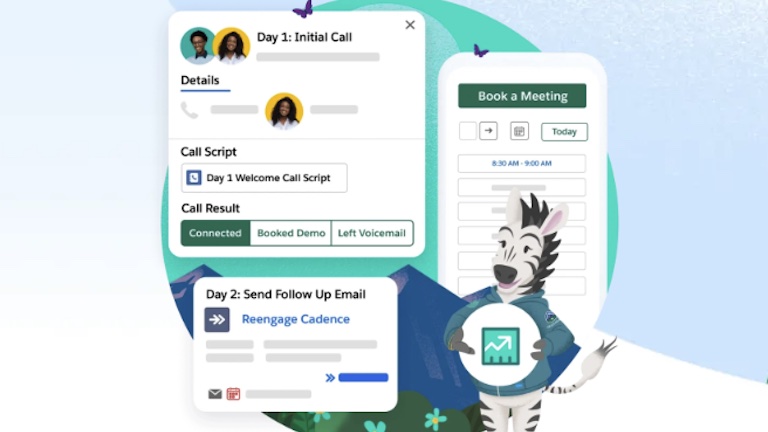
PRODUCT PAGE
See how Sales Engagement can improve every stage of your pipeline

PRODUCT PAGE
See how to boost productivity with AI for Sales
